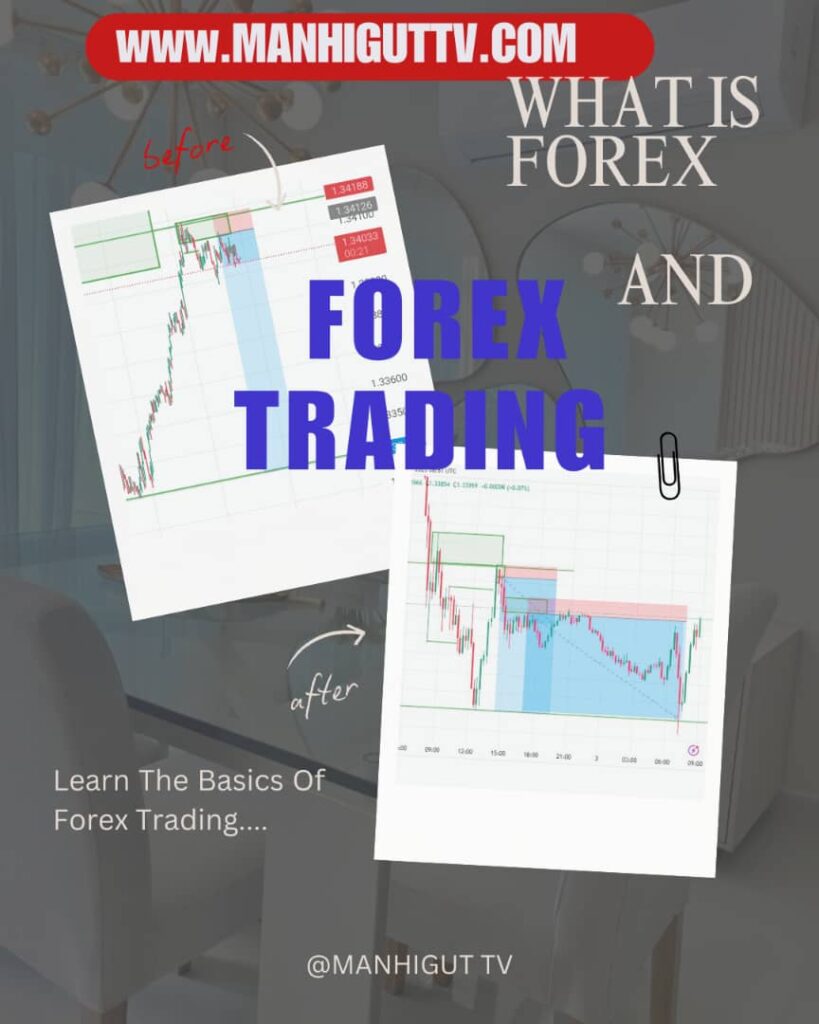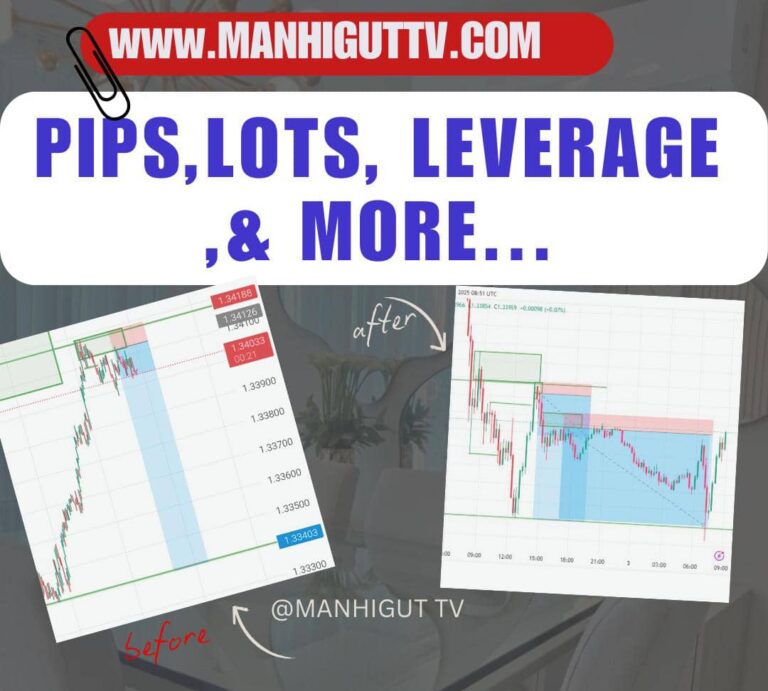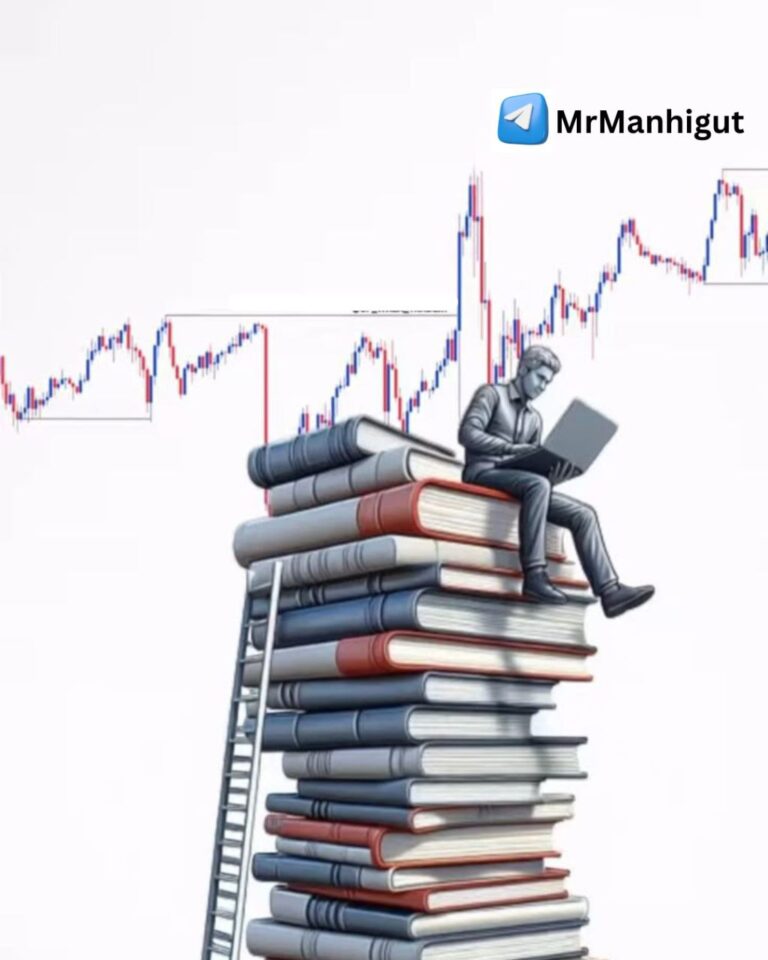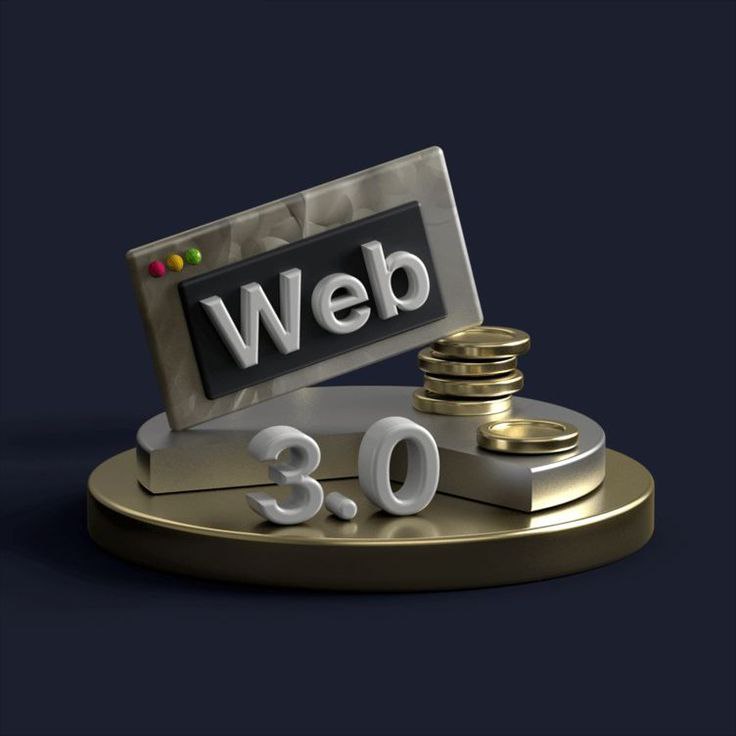
Introduction to Forex — A Layman’s Guide
Clear, practical explanations that anyone can understand.
Introduction to Forex and Forex Trading
Forex, short for foreign exchange, is the global marketplace where different countries’ currencies are bought and sold.
Forex Means Foreign exchange. So, Forex = the market (or system) of exchanging currencies. It is the largest and most liquid market in the world — trillions of dollars change hands every day.
WHAT IS FOREX TRADING
Forex Trading is when people (individual, bank, or companies)buy and sell currencies on purpose to make profits.
Example: A Trader may buy USD/NGN (US dollar against naira) today at a lower price and sell it tomorrow at a higher price to gain money.
👉So, Forex Trading = activity buying and selling in the Forex Market to make profits.This guide explains Forex in plain language. You’ll learn what Forex is, a short history of how the market evolved, who participates, how Forex differs from stocks and cryptocurrencies, and when the market is most active.
Whether you are curious about the basics, planning a trip overseas, running a business that deals with foreign suppliers, or thinking about trying trading on a demo account — this guide is for you.
What is Forex?
Simple explanation
At its simplest, Forex is the act of exchanging one currency for another. If you travel to another country, you exchange your home currency for the local currency. On a much larger scale, banks, companies, governments, investors, and individual traders exchange currencies for trade, hedging, or profit.
How it works — the basics
- Currency pairs: Currencies are traded in pairs, such as EUR/USD (euro vs US dollar) or GBP/NGN (British pound vs Nigerian naira). The first currency is called the base and the second is the quote.
- Price example: If EUR/USD = 1.10, it means 1 euro costs 1.10 US dollars.
- Pips and lots: Smallest price changes are called pips; trading volumes are often measured in lots.
- Leverage: Many Forex brokers allow traders to control a large position with a small amount of money. This magnifies gains and losses.
- Buy and sell: You can buy a currency pair if you expect the base currency to strengthen, or sell if you expect it to weaken.
Why does Forex exist?
Forex exists because cross-border trade and investment require currency exchanges. A Nigerian importer buying goods from Germany needs euros; a tourist visiting the US needs dollars. Governments and banks also exchange currencies to manage reserves and economic policy.
Who sets prices?
Exchange rates float based on supply and demand. This includes: economic data (like inflation and interest rates), geopolitical events, central bank actions, and flows of capital. Prices are determined by many participants making buy and sell orders simultaneously.
History and Evolution of the Foreign Exchange Market
Early systems: barter to coins to currencies
Trade predates formal currencies: people once bartered goods and services. Over time, societies adopted coins, then paper money. Currency systems evolved to make trade easier.
The Gold Standard (19th century — early 20th century)
Under the gold standard, many countries tied their currencies’ values to a fixed quantity of gold. This made exchange rates stable, because each currency had a fixed value in gold. While this brought predictability, it limited monetary flexibility.
Bretton Woods (1944–1971)
After World War II, the Bretton Woods system pegged many currencies to the US dollar, and the US dollar was convertible to gold. This made international trade smoother and helped rebuild global economies.
End of Bretton Woods and the rise of floating exchange rates (1971 onwards)
In 1971 the United States stopped converting dollars to gold at a fixed rate — a move often called the end of the gold window. After this, many major currencies began to float. Exchange rates were allowed to move according to market forces.
Technology and retail access (1990s to present)
For much of its history, forex trading was done between large banks and institutions. The internet changed that. Electronic trading platforms, lower spread costs, and retail brokers allowed everyday people to access the market using demo accounts and small capital. This democratization significantly increased participation and liquidity.
Modern FX market
Today’s Forex market is an electronic network spread across time zones. It operates nearly 24 hours during weekdays and is highly liquid for major currency pairs. The modern market includes algorithmic traders, institutional funds, central banks, retail traders, and more.
Who Participates in Forex?
Forex is not only for day-traders watching charts. The market is populated by a variety of participants, each with different goals. Below are the main players and why they trade.
1. Central banks and governments
Central banks (e.g., the US Federal Reserve, European Central Bank, Central Bank of Nigeria) manage national currency reserves, implement monetary policy, and sometimes intervene in the FX market to stabilize their currency. When a government buys or sells foreign currency, it can move exchange rates.
2. Commercial banks and investment banks
Banks are the largest players. They execute trades for clients, provide liquidity by quoting prices, and trade for profit. A bank may take large positions for currency hedging or speculative reasons.
3. Corporations / businesses
Companies that import/export goods use Forex to pay foreign suppliers and receive payments. They may use derivatives or forward contracts to hedge against unfavorable moves in exchange rates.
4. Hedge funds and institutional investors
These entities trade currencies as part of diversified portfolios. They might use leverage and advanced strategies based on macroeconomic views.
5. Retail traders
Individual traders open accounts with brokers to speculate on currency moves. Retail traders often use technical analysis, follow news, and trade on short- to medium-term timeframes.
6. Brokers and market makers
Brokers provide access to markets. Market makers may take the opposite side of retail trades and earn from spreads and commissions.
7. Payment processors, remittance companies, and tourists
Firms and individuals exchanging small amounts of money—for remittances or travel—are a steady source of FX flows.
How these participants interact
Institutional orders can move markets; retail orders rarely move large markets alone but can create short-term volatility. Central bank announcements, large corporate flows, or hedge fund trades can all change liquidity and price patterns.
Forex vs. Stock Market vs. Crypto Trading
Forex, stock, and crypto markets all allow buying and selling with the aim of profit, but they differ in structure, drivers, hours, and risk.
1. Market size & liquidity
- Forex: The largest financial market; around $7–8 trillion traded daily (estimates vary). High liquidity — major pairs are easy to buy/sell.
- Stocks: Liquidity depends on the company. Large-cap stocks are liquid; small-cap less so.
- Crypto: Smaller than Forex; liquidity varies by coin and exchange — smaller coins can have low liquidity and large price swings.
2. Trading hours
- Forex: Nearly 24 hours during weekdays, because markets in different time zones overlap.
- Stocks: Come with exchange hours (e.g., NYSE), plus some after-hours trading.
- Crypto: 24/7 trading, including weekends and holidays.
3. What moves prices?
- Forex: Interest rates, central bank policy, economic reports (inflation, unemployment), politics, and global capital flows.
- Stocks: Company earnings, management guidance, sector news, and macroeconomic conditions.
- Crypto: Technology upgrades, regulatory news, adoption, and broad speculative sentiment.
4. Volatility and risk
Crypto tends to be the most volatile, often with rapid and large price moves. Forex can be volatile around news events but is more stable for major pairs. Stocks sit somewhere in-between, highly dependent on the specific company.
5. Leverage
Forex brokers often offer high leverage, enabling larger position sizes with less capital. While leverage can multiply profits, it equally multiplies losses. Stock brokers may offer margin, but typically less than Forex. Crypto exchanges also offer leverage on derivatives but risk is high.
6. Regulation & safety
Forex is highly regulated in many countries. Stocks have strong regulatory frameworks. Crypto regulation varies widely by country and is frequently evolving.
Which should you choose?
Your choice depends on appetite for risk, goals, and the time you can commit. Forex can be favored for high liquidity and 24-hour access; stocks for long-term investing in companies; crypto for high-risk, high-reward speculative plays.
Forex Trading Sessions (London, New York, Tokyo, Sydney)
The Forex market is open 24 hours during weekdays because different financial centers around the world open and close at different times. Traders often divide the trading day into sessions defined by the most active regions.
Why sessions matter
Each session has a different character — varying liquidity, volatility, and news flow. Some currency pairs are more active in certain sessions (e.g., JPY pairs in Tokyo).
Session overview (approximate GMT times)
- Sydney: 22:00–07:00 GMT — Quiet session, often lower volatility. AUD and NZD pairs can be more active.
- Tokyo (Asian): 00:00–09:00 GMT — More activity in JPY and Asian crosses. Important economic releases from Japan, China, and other Asian countries can move markets.
- London (European): 07:00–16:00 GMT — One of the busiest sessions with high liquidity. EUR, GBP, and CHF pairs move most here.
- New York (U.S.): 12:00–21:00 GMT — US economic data and Fed decisions can cause large moves. The London/New York overlap (roughly 12:00–16:00 GMT) is often the most active period.
Session overlaps
Overlaps (e.g., London + New York) tend to produce higher liquidity and volatility — many traders consider overlaps the best times to trade major pairs.
How to use sessions when trading
- Pick pairs relevant to the session: Trade JPY pairs during Asian times, EUR/GBP during London, USD pairs during New York.
- Watch for news: Economic releases often happen during local session hours; watching the economic calendar is critical.
- Adjust risk: Expect larger moves during overlapped sessions; set wider stops or smaller position sizes if you want to account for higher volatility.
Local time & daylight saving
Remember session times shift with daylight saving time in the US and Europe. Always confirm exact session times relative to your local time.
Everyday Examples & Simple Analogies
Analogy: currency exchange like fruit market
Think of currencies like fruits at a market. If apples (euros) are in high demand and scarce, their price relative to bananas (dollars) rises. Traders buy apples if they think the price will rise and sell if they think it will fall. Big sellers (banks) and small sellers (retail traders) interact, and the market price adjusts continuously.
Travel example
You visit London with 200,000 NGN. At the airport your exchange agent offers a rate that converts your Naira to Pounds. The rate you receive depends on the interbank exchange rate plus a margin the agent keeps. Online Forex shows the interbank rate (close to what big banks trade).
Business example
A company in Nigeria imports machinery from Germany priced in euros. The company must exchange Naira for Euros to pay the supplier. If the Naira weakens against the Euro before payment, the business pays more in Naira. To avoid this risk, it might use a forward contract to fix the exchange rate in advance.
Trading example (simple)
- EUR/USD = 1.10 today.
- A trader believes the euro will strengthen, so they buy EUR/USD.
- If EUR/USD rises to 1.15, the trader can sell and make profit (difference multiplied by position size).
- If EUR/USD falls to 1.05, the trader would face a loss if they close the position at that price.
Wrap-up & Next Steps
You now have a solid foundation: what Forex is, its history, the major participants, how Forex differs from stocks and crypto, and how the market runs across time zones. Below are practical next steps.
Suggested next steps
- Learn the vocabulary: Pips, lots, leverage, margin, spreads, and order types.
- Open a demo account: Practice with virtual money to understand platforms and trade execution.
- Read a structured course: BabyPips School of Pipsology is a free, beginner-friendly course.
- Study risk management: Learn position sizing, the 1–2% rule, and how to use stop-loss orders.
- Keep a journal: Record trade ideas, entries, exits, and lessons learned.
Common beginner mistakes to avoid
- Using too much leverage early on.
- Trading without a plan or risk management.
- Chasing “guaranteed” systems or signal services that promise unrealistic returns.
- Letting emotions (fear or greed) dictate trades.
Resources & Suggested Reading
Below are resources that are particularly helpful for beginners:
- BabyPips — School of Pipsology: Free structured course for beginners.
- Investopedia — Forex section: Articles and tutorials on economics and trading basics.
- Broker education centers (IG, Forex.com): Platform-specific tutorials and demo accounts.
- Economic calendar: Follow news and releases that impact currency prices.




